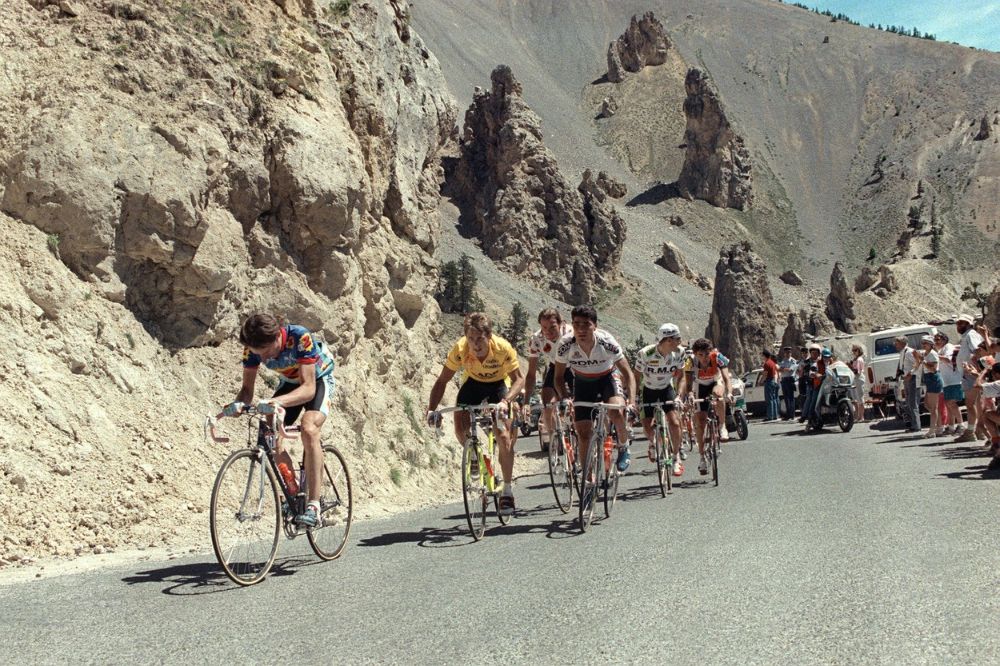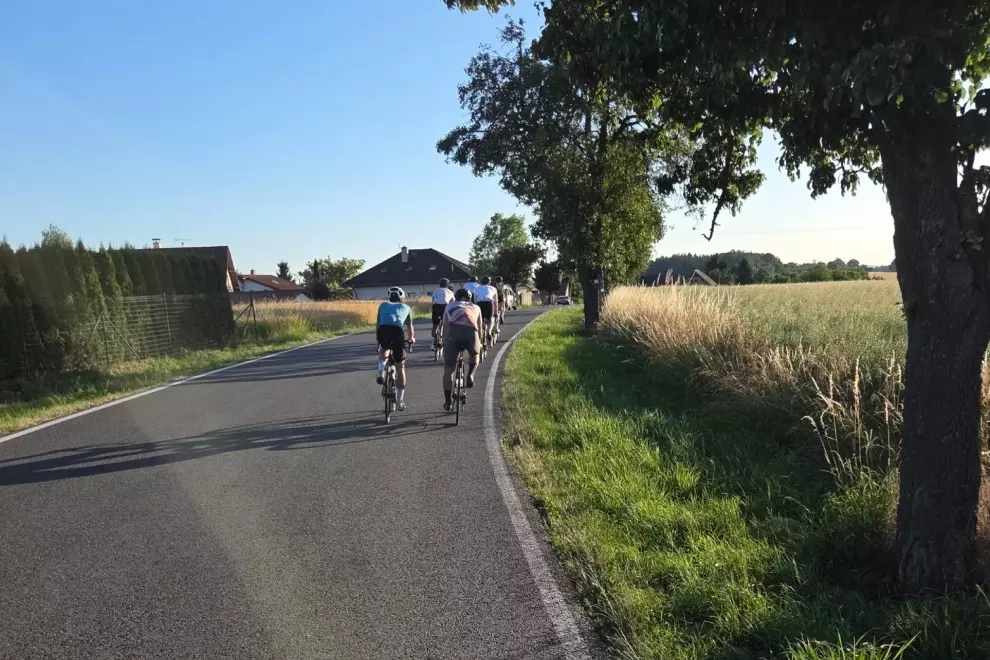No other sport has produced so much drama as cycling has done over the past century. For any devastating attack that exalted the public, a dozen nuclear counterattacks left the spectators screaming for more. For any monster climb, there are just as many heart-stopping descends. For any epic breakaway, there are five era-defining comebacks. And while many of these moments are filled with anger, disappointment and tears, there are just as many empowering stories that are a symbol of overcoming difficulties, odds and even fate. However, only one such moment has been dubbed “the greatest comeback in cycling history”.

A game of cat and mouse
July 23, 1989. The 76th edition of the Tour de France was ready for its conclusion. Only one stage remained – a 24.5-km individual time trial from Versailles to the iconic Champs-Élysées. The whole Tour was one continuous thriller in which Greg LeMond and Laurent Fignon constantly took the spotlight. It was a glorious dance between these two powerhouses, and it was the American who first took the lead after a fantastic time trial at stage 5. However, Fignon was only 5 seconds back, waiting for his chance to take the yellow jersey.
The cat and mouse game between the two continued for the following five stages, as LeMond took advantage of the yellow jersey and rode defensively, always on Fignon’s wheel. On the toughest Pyrenees climb, though, the Frenchman had enough. He attacked LeMond with 1 km to go and took a twelve-second lead on the American. The yellow jersey was Fignon’s for the first time during this Tour, with a 7-second advantage over LeMond.
Another five stages later on the Alpe’s slopes, LeMond took the yellow jersey once again, only to lose it two stages later at the legendary Alpe d’Huez climb. The Frenchman had a 26-second advantage but he almost doubled it to 50 seconds in the following three stages.
On July 23, 1989, there was only one stage left. Fignon had 50 seconds on LeMond and was pretty sure that they were quite enough for the 24.5-km individual time trial.
Two years earlier
Greg LeMond was no stranger to winning. He had one UCI World Championship in 1983 and one Tour de France victory in 1986 under his belt. However, in April 1987, while recovering from a wrist injury, LeMond went on a turkey hunt on his uncle’s ranch in California. The cyclist got separated from his companions, and when his brother-in-law saw a movement behind a bush nearby, he shot. Unfortunately, on the other end was Greg. Approximately 60 pellets plunged into LeMond’s back and right side. The cyclist was rushed to the hospital where he arrived with 65% of his blood already drained. Twenty minutes separated Greg from certain death. After a lengthy life-saving operation, LeMond was brought back to life, although 35 pellets were forever left in his body.
A year later, Greg was ready to come back to racing but his dedication took a turn on him. Due to over-training, he developed tendonitis in his right shin, which resulted in another surgery. Everything pointed out that Greg’s best days on two wheels were far gone.
A ride to remember
Being 50 seconds behind in the final stage of Tour de France nearly two years after almost dying is a remarkable achievement on its own, especially when you are racing a god-like cyclist like Laurent Fignon. However, as it had become evident with the battle for his life, LeMond was never the one to shy away from a fight. Furthermore, with his custom-made handlebars giving him better aerodynamics, the American was confident the race was far from over. He needed to gain 50 seconds in 24.5 km. With this in mind, LeMond climbed the starting stage.
5, 4, 3, 2, 1… and LeMond was on his way.

Two minutes later, Fignon took his place on the starting stage. The Parisian looked confident – no aero helmet and no aero handlebars. The crowd is ecstatic. Fignon was on the way to bringing back the Tour de France victory to France after three long years of waiting.
LeMond was like a locomotive. He reached 64 kph on the first part of the course. The American never lost his rhythm, and by the finish on Champs-Élysées, he was just a few seconds away from Delgado who was third in the overall standings and started 2 minutes before LeMond. The impossible was already looking quite achievable. Greg crossed the finish line under the roaring crowd with a stunning 26:57 and a record speed of 54.5 kph. He stepped away from his bike as if he hadn’t just ridden 24 km at a record pace. However, there was time for collapsing, and it wasn’t now. Fignon was just a couple of minutes behind him, and Greg wanted to witness his triumph on his feet.
Fignon, on the other hand, looked as if he had lost his rhythm at the start, standing from his seat for power surges. During the first 10 km, he lost 18 seconds off of his advantage. Even at this rate, though, the Parisian would win with a 5-second lead, although the stage win would go to the American with a whopping 45 seconds margin.
Things weren’t looking good for LeMond, especially when Fignon entered the second half of the stage and found his rhythm. At this point, the Frenchman was riding at a pace he had never achieved previously. Fignon was giving his best. He needed a 27.47, and the title was his.
The 10 seconds of truth
At 27:37, just 10 seconds before losing the title, Fignon dashed through the 250-m line. His head was down, his legs were burning, and the crowd was cheering their champion.
27:38 Fignong glanced at the finish line, which was so close, yet so far.
27:40. The 200-m sign was left behind as the Frenchman prepared for his final sprint.
27:41 Fignon’s bike curved to the left as if emphasizing the Parisian’s helplessness.
27:45 Fignion was giving his all. His muscles were aching, his heart was screaming, his legs were dying.
27:46 One second and it’s all over. The crowd was overjoyed, but they didn’t have the result yet.
27:47. The end was here. Fignon was less than 130 meters away but his time was up. Greg LeMond burst with joy. The impossible had become a reality.
8 seconds
Fignon finished only 8 seconds later. Eight seconds that cost him the Tour de France title. Eight seconds that created the legend of Greg LeMond. The most amazing thing about this finish is that Fignon wasn’t relaxing or being overconfident. On the contrary. His average speed was nearly 53 kph, which was the fastest time-trial pace he had ever done. But LeMond was simply a titan.
This 8-second win remains to this day the smallest margin by which the Tour de France winner has been decided.
Anything but fluke
Many attribute LeMond’s victory to the superior bike model made possible by the, at the time, innovative aero handlebars. However, Greg’s return was far from a one-time event. Just a few months later, the American won the UCI World Championship. Then, he made a return to the Tour de France the following year, only to win it again, this time with a much higher margin.
Lemond went on to become an inspiration to many. He became a sensation, a personification of the fighting spirit, of the undying desire to win, of the relentless obsession with cycling, which many of us know far too well. And while most of us will never know the joy of winning the Tour de France firsthand, we can still take Greg LeMond’s lesson never to give up, never to say never, and to always fight for our dreams.




